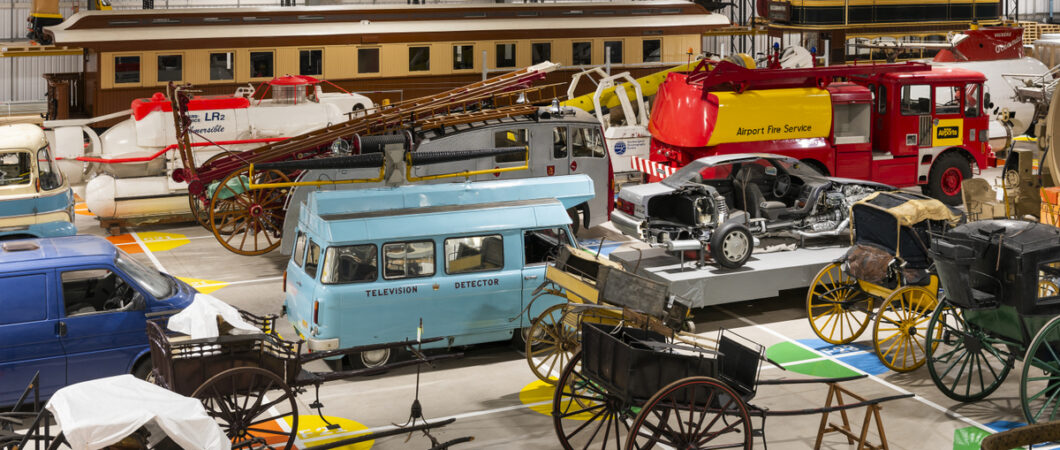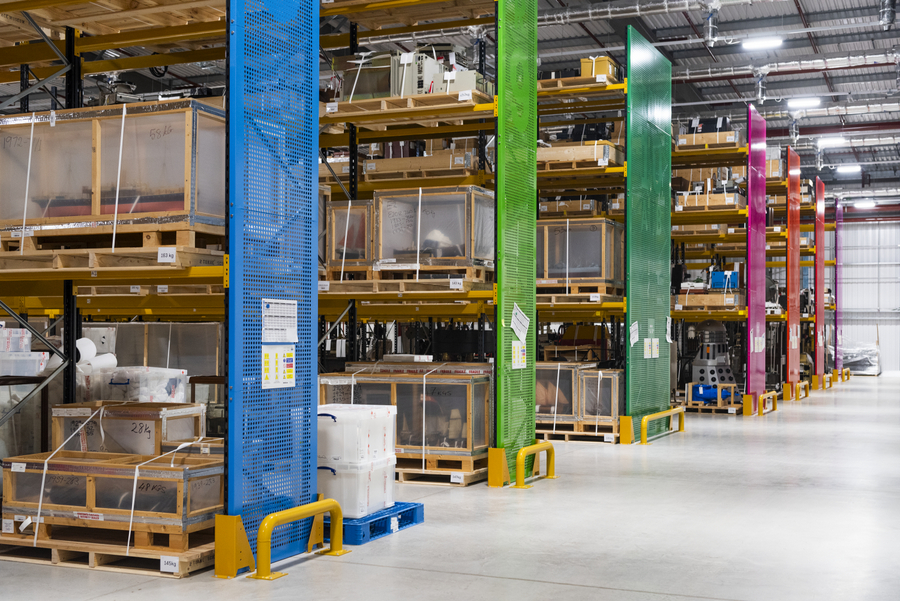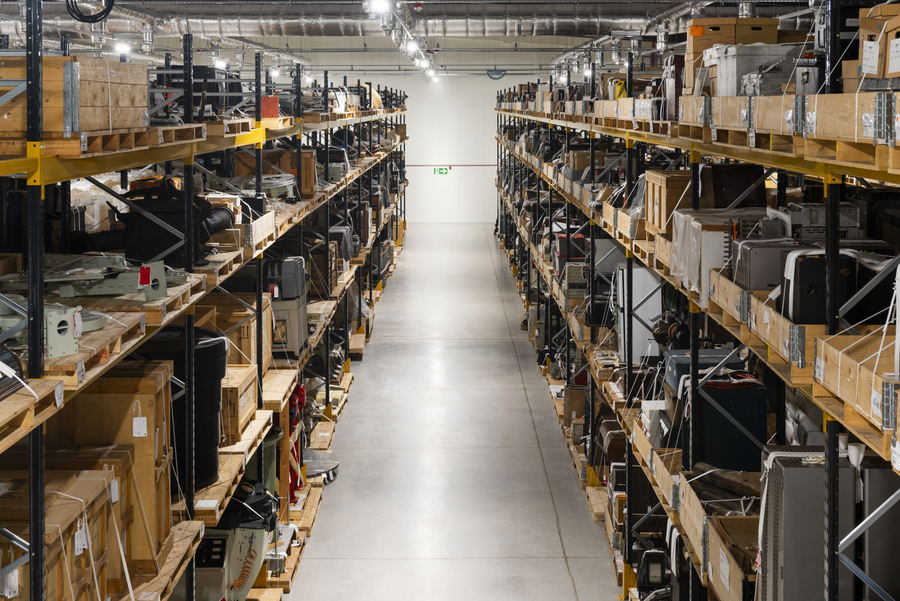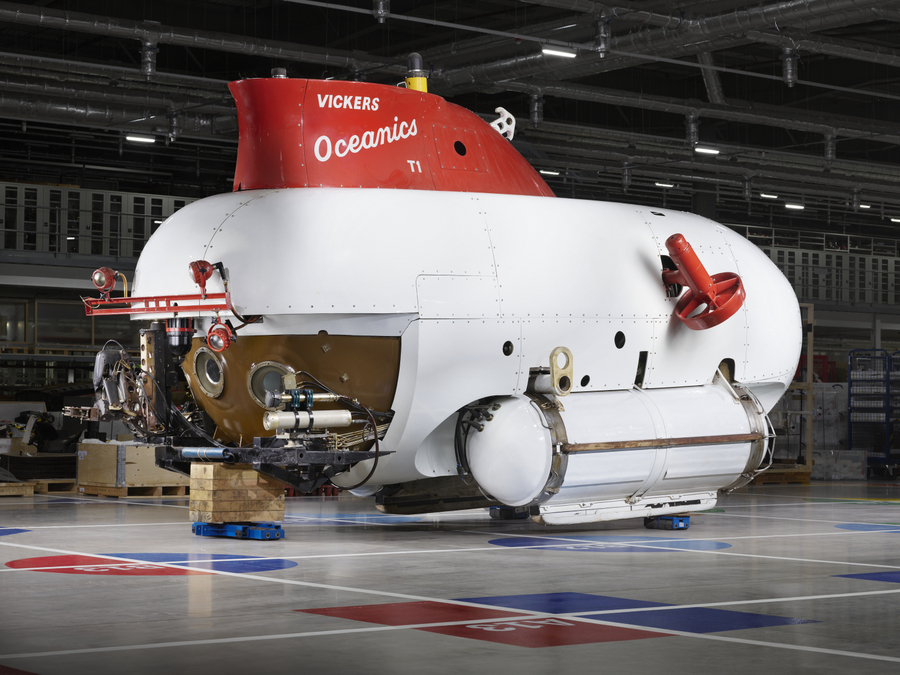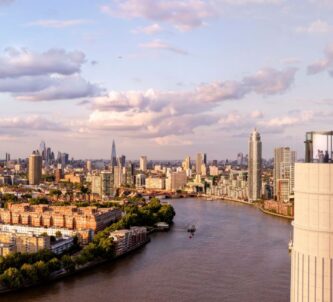Over 300,000 historic items from the Science Museum Group* collection have been carefully moved into a new facility at the National Collections Centre in the Science and Innovation Park near Swindon in Wiltshire.
The new Hawking Building, named after Prof. Stephen Hawking, is not a museum. It is a storage and research facility. However, as of today, Fri 11 October 2024, it is open to the public.
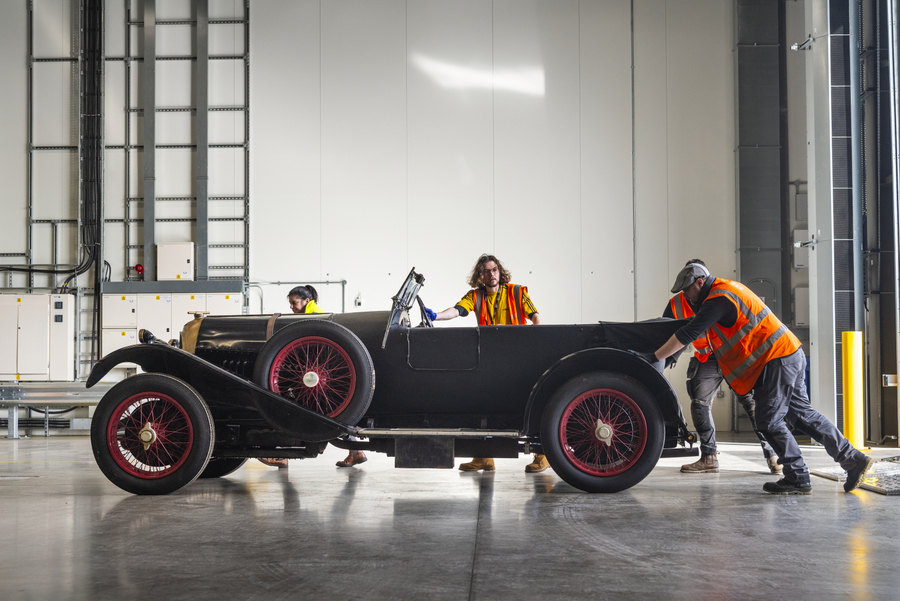
Regular guided public tours, school trips and researcher visits will now offer unprecedented public access to the collection, with visitors invited to walk among towering objects and glimpse behind the scenes of a working museum store.
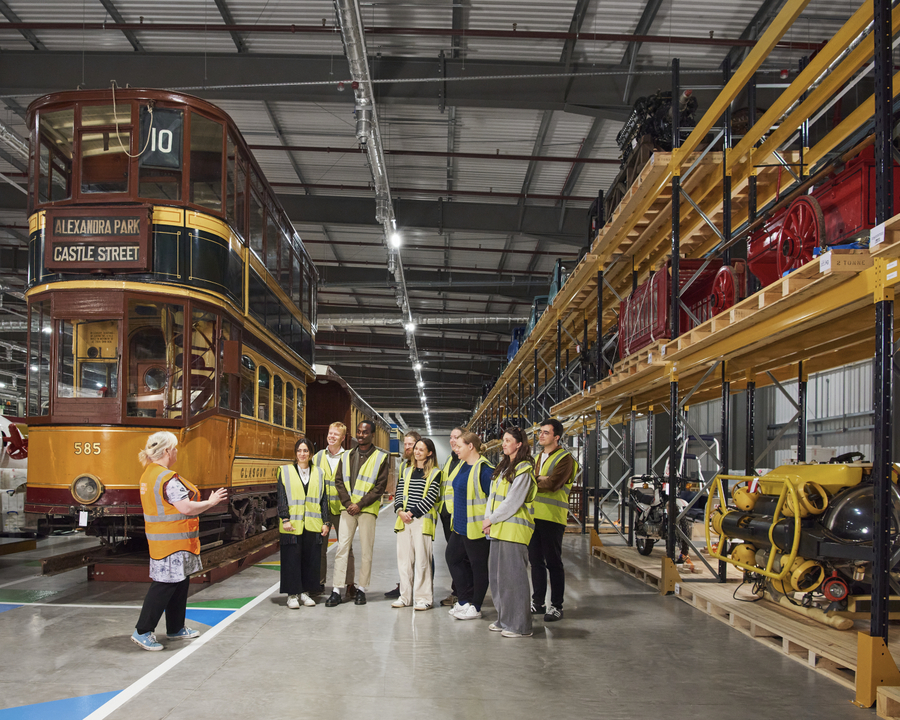
Artefacts range from a toy duck used by scientists to identify landing sites on a comet, to a 1.3-tonne Sno-cat, the first vehicle to complete a motorised crossing of Antarctica, and include hundreds of items from Professor Stephen Hawking’s office.
As a child, Hawking drew inspiration from regular visits to the Science Museum. Much later, he lent his communication devices for display, gave lectures and debated Nobel Prize laureates in the museum, and even served as a guide for a day. In 2021 the extraordinary contents of Hawking’s Cambridge University office were acquired for the nation by the Science Museum Group through the UK Government’s Acceptance in Lieu scheme. More than 1,000 objects, including his communication and mobility equipment, have since been studied and cared for in the Hawking Building, with staff and researchers uncovering the everyday and extraordinary stories within them.
His son, Tim Hawking, said: “As a family, we are delighted that the Science Museum has chosen to name this magnificent new facility the Hawking building. We are so grateful to the Science Museum Group for taking such good care of the Stephen Hawking collection and ensuring that his work and legacy as a scientist, disability advocate and technology pioneer will be accessible to visitors to their museums nationwide.”
The Science and Innovation Park is a 545-acre former RAF airfield near Swindon in Wiltshire. At the heart of the Park is the National Collections Centre where the Science Museum Group Collection is now safely stored in its new purpose-built home, thanks to funding from the Department for Culture, Media and Sport and from HM Treasury.
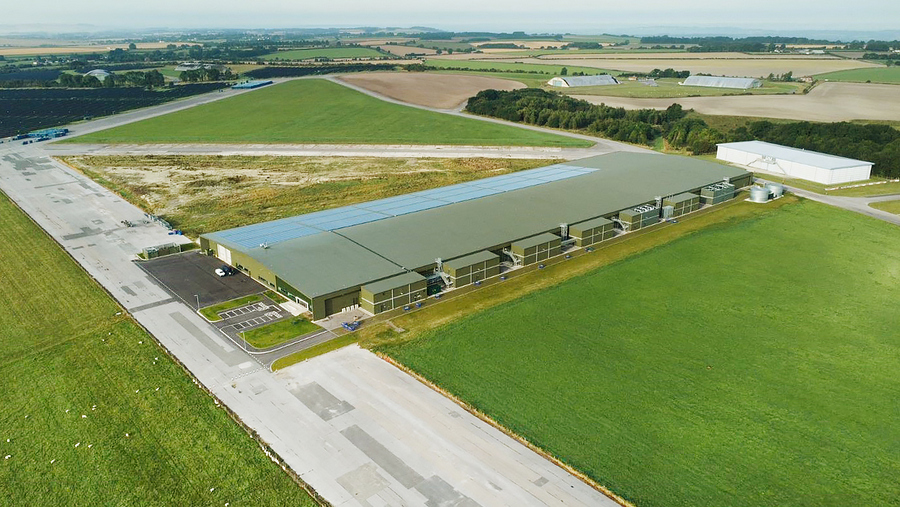
Construction of the huge 90m x 300m Hawking Building began in 2019 and was completed eighteen months later. It features a spacious storage hall which contains 30 kilometres of shelving and a freestanding colour-coded grid which enables staff to more easily organise and store huge objects – from a 19.2m-long racing boat to a 5m-tall tramcar.
The building also contains conservation laboratories, research areas, and photography studios for digitising the collection.
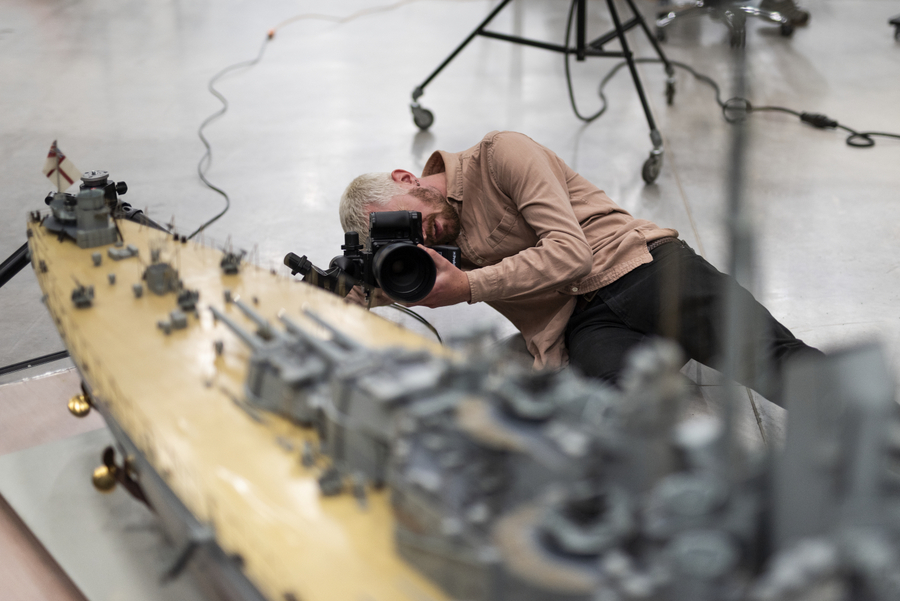
Hundreds of thousands of historic objects can now be explored through Science Museum Group’s online collection. In 2018 just 5% of objects had a photograph published online; that figure is now 50%. With new objects and images published online each month, that continues to grow.
But if online digital renditions of artefacts in the collection are not enough, researchers can apply to visit and see a particular object from the collection for free. The Hawking Building provides a spectacular research resource with historic objects from the Science Museum Group Collection available to study alongside the Science Museum’s Library and Archive collection of over half a million items.
Schools can also take advantage of the facility. From Monday 14 October, the Hawking Building will host local schools for a week of education visits. These groups will enjoy a live science show about forces, delivered by the Science Museum Group’s Explainers, and take part in a hands-on forces workshop, perfect for Key Stage 2, in an outdoor learning space then explore historic objects from the Science Museum Group Collection in the Hawking Building. More school visits will be available for 2025.
Sustainability is at the heart of the Hawking Building, which is the Science Museum Group’s most energy efficient building yet. Its highly insulated and extremely airtight design allows the stable environmental conditions needed for the long-term preservation and care of the collection to be maintained with minimal energy use. A ‘fabric first’ approach has maximised the performance of the facility’s building materials, reducing energy consumption, costs and carbon emissions. Solar panels contribute to the facility’s electricity needs, while a loading bay airlock, limited access points and smart LED lighting further reduces energy usage.
All images courtesy of the Science Museum Group
* The Science Museum Group comprises the Science Museum in London, the National Railway Museum in York, Locomotion in Shildon, the National Science and Media Museum in Bradford, and the Science and Industry Museum in Manchester.
Guided Tours
Tours will run on select days from Friday 11 October – Friday 15 November 2024, and then will recommence next year on Friday 7 March 2025.
Tours take place on Fridays, with some midweek dates available during school holidays.
Tickets to the guided public tours of the Hawking Building are £27.50.
Concessions and local residents (Postcode must begin SN1, SN2, SN3, SN4 or SN5) tickets are £16.50.
Ages 7-12 go free. (Strictly ages 7+; recommended age is 12+)
For further information or to book tickets, visit scienceinnovationpark.org.uk/visit-us/public-guided-tours.

